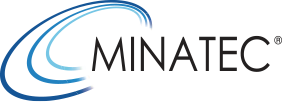News : Industry
February 01 2021
JSIam 2021 to bring PhDs and business pros together online
- Education
- Industry
- Life @ MINATEC
- News
The organizers of the Junior Scientist and Industry Annual Meeting (JSIam) announced at the end of January that they would make the March 11 event 100% virtual. The purpose of JSIam is to raise up-and-coming research scientists’ awareness of the career opportunities available to them outside of government research. The event is intended primarily for […] >>
February 01 2021
Industrial companies look to unfalsifiable, shareable blockchain
- Industry
- News
- Research
Blockchain, best-known for its use in cryptocurrency, is garnering interest from industrial companies. And CEA-Leti is currently very active on the topic, with IRT Nanoelec and EU projects in progress. Both projects are exploring how to embed cryptographic functions on a physical system like a robot. The idea is to certify the data produced by […] >>
December 01 2020
ERC Proof of Concept grant for SOT-MRAM fabrication process
- Industry
- News
- Research
Researchers at Spintec won an ERC Proof of Concept grant for a SOT-MRAM memory fabrication process developed under an earlier ERC grant. The challenge here is the unusual profile of the memory’s free magnetic layer. Rather than being round, it has a number of angles. This unique geometry eliminates the need to use micromagnets, which […] >>
December 01 2020
Avalun Covid-19 antigen test now on market
- Events
- Industry
- Innovation & Society
- News
Startup Avalun, which calls the MINATEC High-Tech Building its home, released its Covid-19 antigen test a few days ago. This powerful growth driver will also help speed up the rollout of Avalun’s portable lab, LabPad® Evolution. At the start of 2020, Avalun had plans to roll out its LabPad® INR in six regions across France […] >>
December 01 2020
A new wrinkle sure to foil counterfeiters’ plans
- Industry
- News
- Research
In research published in Advanced Materials, CEA-Leti and Bordeaux-based CELIA* developed a process to generate random micrometric patterns. A pulsed laser is used to melt thin layers of an amorphous germanium chalcogenide. This causes tiny wrinkles that are micrometers wide and tens of nanometers deep to form, creating the pattern. They are impossible to reproduce […] >>



 Contact us
Contact us How to find us
How to find us







